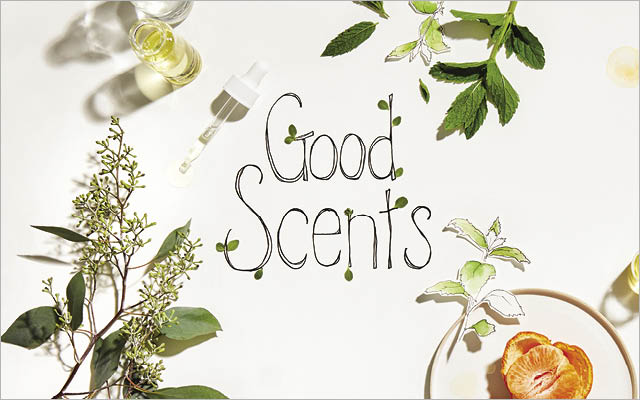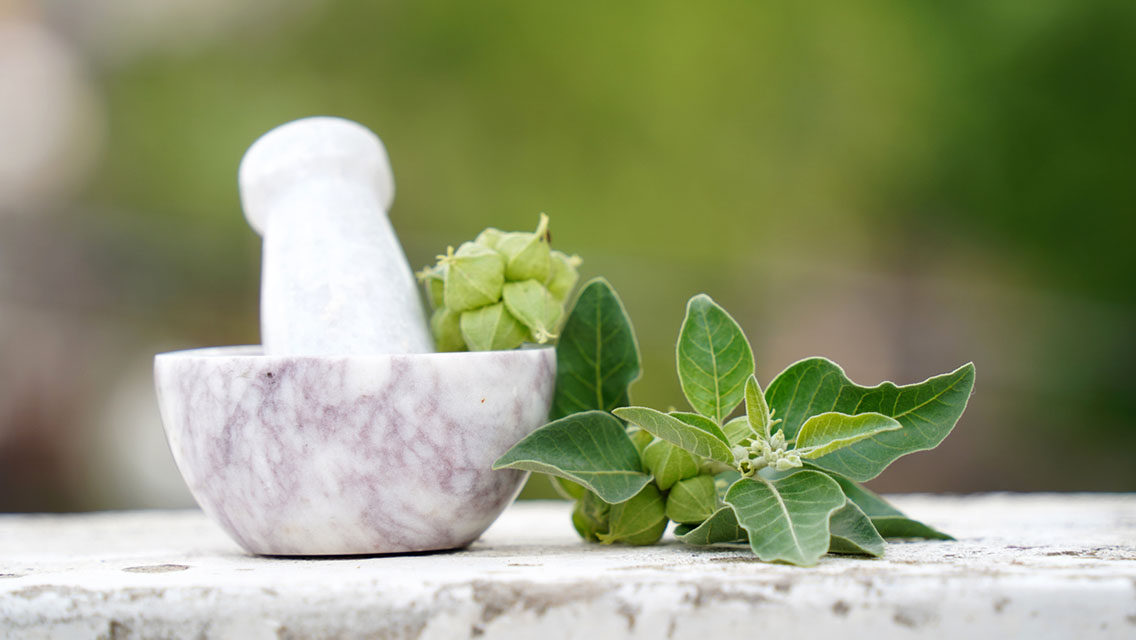Juli Reynolds, BSN, is a perioperative nursing specialist at Vanderbilt University Medical Center in Nashville. Highly trained in pre- and postsurgical care, she had never given much thought to the practice of aromatherapy — until a friend suggested she try using essential oils to treat her migraine. The diffusion of frankincense, lavender, and peppermint banished her headache.
“Until then, I didn’t understand the potential that essential oils had for legitimate healthcare,” she says.
Reynolds dug into the research and attended a symposium on the science of aromatherapy for healthcare providers. “I can’t say that I understood everything I heard that day, but what I realized is that this is a form of pharmacology, and it can be effective and safe.” Not only that, she adds, but it’s substantially more cost-effective than drugs.
She soon brought her newfound knowledge to her work with surgical patients at the hospital.
A whiff of peppermint oil, for example, can be enough to stimulate urination in patients who are struggling to relieve themselves. This may speed their departure from the hospital after a procedure, since doctors typically won’t sign discharge papers until a patient can urinate independently.
“We’ve prevented so many overnight stays with a single drop of peppermint oil,” says Reynolds. “It’s super simple and super safe.”
Likewise, black-pepper essential oil can be a powerful ally in the quest to quit smoking. “We started our tobacco-cessation program in October 2015,” says board-certified holistic nurse and clinical aromatherapist Julie Streeter, BSN, RN, who leads the aromatherapy program at Minnesota’s Allina Health hospital system. “We’ve had patients who have tried patches, hypnosis, and other strategies, and nothing worked. Then a simple inhaler with black-pepper essential oil helped them quit smoking.” The vapor reportedly mimics the sensations of smoking, which helps reduce cravings.
Aromatherapy uses essential-oil scents to enhance physical, mental, emotional, and spiritual well-being. It is often associated with spas and yoga studios, but Reynolds, Streeter, and other healthcare providers are discovering its therapeutic potential.
Allina’s aromatherapy program is now the largest in the world, with essential oils used at most of its primary-care clinics and hospitals. Its Mother Baby Center and Virginia Piper Cancer Institute both rely on aromatherapy to address a variety of ailments, including pain, nausea, and spiritual distress.
“If a patient is feeling lost and asking, ‘Why did this happen to me?’ frankincense may be very grounding,” explains Streeter.
In short, aromatherapy can be helpful for a variety of physical and emotional conditions, as well as a valuable adjunctive and complementary therapy. And it’s easy to incorporate this healing practice into your daily life.
First, though, it’s important to understand the role of essential oils.
What Are Essential Oils?
Earth is home to some 400,000 plant species. So far, humans have identified beneficial essential oils in a few thousand of them — but there could be many more to come.
Scientists do not know why certain plants contain aromatic oils, but theories abound. The oils may attract beneficial insects to the plant or protect against parasites and predators. The oils might also be waste products of biosynthesis, making them the best-smelling garbage in the world.
“Essential oils are the sweat of the plant,” says Valerie Bennis, certified aromatherapist and founder of the Essence of Vali line of aromatherapy products.
Whatever their botanical imperative, aromatic plants have benefited humans for millennia. The first recorded use of distilled plant materials occurred in medieval Persia, and essential oils were available in the apothecaries of 16th-century Europe.
Today, aromatherapy is finding a wide audience: Some athletes have begun to use it to boost performance, and researchers are investigating certain aromatic essential-oil compounds for their potential to protect the aging brain from cognitive decline.
Other conditions that respond well to aromatherapy include anxiety, inability to concentrate, insomnia, allergies, travel sickness, and headaches.
Because aromatherapy has been overhyped in some wellness circles, the topic can provoke skepticism. “When I approach people with essential oils, they often doubt my credibility,” says UK-based functional-medicine naturopath Rebecca Tanyar-Mead, DipCNM.
Still, she adds, there’s science to support their use in aromatherapy.
How Aromatherapy Works
Essential oils likely work through our olfactory senses. “We know that smell is connected to the limbic system, which is an area in the brain that deals with emotions and memories,” says Sarah Villafranco, MD, a former emergency-medicine doctor and creator of an essential-oil-based skincare line.
This is the neurological theory behind aromatherapy: Because your sense of smell is so uniquely connected to emotion and memory (the olfactory bulb links directly to the amygdala and the hippocampus), scents have the power to transport you back to a particular moment in time. It’s why the scent of tar can awaken vivid memories of your elementary-school playground, but the feel of an itchy sweater may not — even though you wore one in fifth grade. The tactile sense doesn’t connect to these brain regions in the same way.
Certain essential oils operate basically like drugs. Take lavender, which is known for its calming properties. Its active compounds are linalool and linalyl acetate: In animal studies, the scent of linalool has had effects similar to those of the sedative diazepam, calming anxiety and enhancing sleep. Linalyl acetate has also been shown to have tranquilizing effects.
Other plant oils also appear to ease anxiety. The smell of orange essential oil may help reduce stress-hormone levels in children during dental appointments, according to a study published in Advanced Biomedical Research. And researchers found that adults with high blood pressure who inhaled a blend of lavender, ylang-ylang, marjoram, and neroli experienced a greater decrease in cortisol and daytime blood pressure than study subjects who were exposed to synthetic fragrances and those in a control group (no fragrance), according to results published in Evidenced-Based Complementary and Alternative Medicine.
Other studies suggest that using a variety of aromatherapy oils can benefit cancer patients by easing anxiety and depression and improving pain control and sleep. One 2018 Veterans Administration study found that the treatment improved sleep and reduced nausea and vomiting among cancer patients — including those in palliative care.
Another notable study reported that aromatherapy decreased the stress levels of nursing staff, which may translate into improved patient care.
Both peppermint and eucalyptus oils have been shown to boost exercise performance; they can also help relieve chronic pain when used in conjunction with conventional treatments.
Most essential oils are safe for home use. They can be diffused in the air or combined with carrier oils and used for massage or in the bath. Sniffing scents straight from the bottle also works. (For instructions on making a diffuser, see “How to Make a Reed Diffuser.”)
Though aromatherapy is safe in general, it is serious medicine. These are potent plant compounds that interact with our bodies on a chemical level and can have negative effects. For example, pets, whose sense of smell is more acute than ours, may become sick if they inhale scents in enclosed spaces. (To learn more about using essential oils safely, see “What You Need to Know About Essential Oils.”)
Aromatherapy can be a useful addition to your own healing arsenal if you keep these facts in mind. “I think essential oils are accessible to anyone,” says Reynolds.
She also thinks aromatherapy can play a valuable role in improving allopathic care. “It’s not one or the other for me,” Reynolds says, adding that she believes medications still have their place. For her patients, aromatherapy can help mitigate drug side effects and even replace drugs on occasion — and for good reason. “Essential oils are more affordable and do less harm.”
The Problem With Fake Scents
Not all scents are created equal. Aromatic plants’ essential oils differ significantly from fragrances cooked up in laboratories. In fact, most synthetic scents are harmful to your health. That’s important information because so many everyday brands contain them: laundry and dish soaps, healthcare and body-care products, cleaning compounds, and your cubicle-mate’s perfume, to name just a few.
“The word ‘aromatherapy’ is misleading because it is not just about fragrance,” says aromatherapist Valerie Bennis. “True aromatherapy always involves plants.”
Exposure to synthetic fragrances can be a giant headache, often literally. One in three people reported health problems — including migraines and respiratory issues — when exposed to scented consumer products, according to one study. Fifteen percent of those surveyed reported losing workdays because of exposure to synthetic fragrances in the workplace, and 20 percent said they leave businesses faster if they smell an air freshener or other fragranced product. (For more on this, see “The Problem With Perfume”.)
Whether you notice immediate symptoms or not, your body is absorbing the volatile organic compounds (VOCs) emitted by synthetic fragrances. A review of 37 scented consumer products (including cleaning supplies, air fresheners, and personal-care products) found that, collectively, they contained 156 VOCs, 42 of which are classified as toxic or hazardous under U.S. law. Every one of the products contained at least one toxic VOC.
Unfortunately, reading labels closely won’t help you: The FDA doesn’t require manufacturers to disclose the source of a product’s signature scent — these ingredients are protected as a trade secret. So you may find “fragrance” or “perfume” on a label, but this is a stand-in for what is typically a mix of dozens of potentially hazardous chemicals.
To reduce the impact of synthetic scents on your health, avoid products with “fragrance” or “perfume” on the label. And know that products labeled “unscented” often use masking fragrances. You’re best off sticking to products with simple ingredient lists.
If you’re going to use a scented product, search for “plant-based” or “essential-oil fragrance.” These products are more expensive to manufacture, so companies will typically highlight their extra efforts on the label.
It’s easy to make many household products yourself — from all-purpose cleaners to body oils — and you can always add a few drops of your favorite essential oil to make them more enjoyable to use. (For recipes, see “Make Your Own Spring-Cleaning Kit”.)
Finally, trust your nose: If a scent in a manufactured product knocks you flat, it’s probably synthetic. Plant-based scents simply aren’t as strong.
Easy Aromatherapy
Aromatherapy can be a convenient, portable remedy — many of the best-known therapeutic oils are blended with carrier oils in roll-on form.
Mint: Peppermint oil may help improve memory and alertness, as well as boost exercise performance. It’s also been shown to assist in relieving tension headaches, and many people report that it can ease travel sickness.
For a touchy stomach, you might also try spearmint. “Inhaling the aroma of spearmint essential oil is cooling and great for nausea,” says Julie Streeter, BSN, RN, director of the Allina Health aromatherapy program. “It’s also a very uplifting scent.”
Eucalyptus: By helping thin mucus and quiet inflammation, eucalyptus can battle colds and flu, says naturopath Rebecca Tanyar-Mead. Animal studies suggest it may also improve exercise performance.
Lavender: Studies show the smell of lavender eases anxiety and promotes sleep. It may also alleviate symptoms of seasonal allergies. Allina Health’s Tobacco Cessation program is testing a blend of black-pepper and lavender essential oils to help cut tobacco cravings for people who smoke for stress relief. (The program is also examining a blend of black pepper and lime for those who say that smoking energizes them.)
Sweet Marjoram: Part of the mint family, marjoram is purported to protect the heart, liver, and digestive tract. “Marjoram is very versatile and very safe,” says perioperative nursing specialist Juli Reynolds, BSN. “It’s great for pain, nausea, stress reduction, and any kind of joint discomfort.”
Vetiver: This oil, with its woodsy aroma, is a potent antioxidant and can boost concentration and alertness. “I use it for children who have trouble staying calm and concentrating in school,” says Tanyar-Mead.
Bergamot: This essential oil, which gives Earl Grey tea its characteristic aroma, may promote a positive mood.
Orange: Essential oil from oranges has been shown to help ease anxiety in women in labor and may have pain-relieving properties. “Mandarin has worked really well in our aromatherapy program, especially in the Mother Baby Center,” says Streeter. It can relieve nausea and may improve a mother’s sleep postpartum.
Seasonal Allergy Remedy
If you suffer from seasonal allergies, try this hay-fever treatment, created by naturopath Rebecca Tanyar-Mead:
- 1 drop peppermint essential oil
- 1 drop eucalyptus essential oil
- 1 drop lavender essential oil
- 1 drop basil essential oil
- 4 teaspoons coconut oil
Tip: Add peppermint, eucalyptus, lavender, and basil oils to the coconut oil and rub the blend behind your ears for relief.
This originally appeared as “Good Scents” in the November 2019 issue of Experience Life.




This Post Has 0 Comments